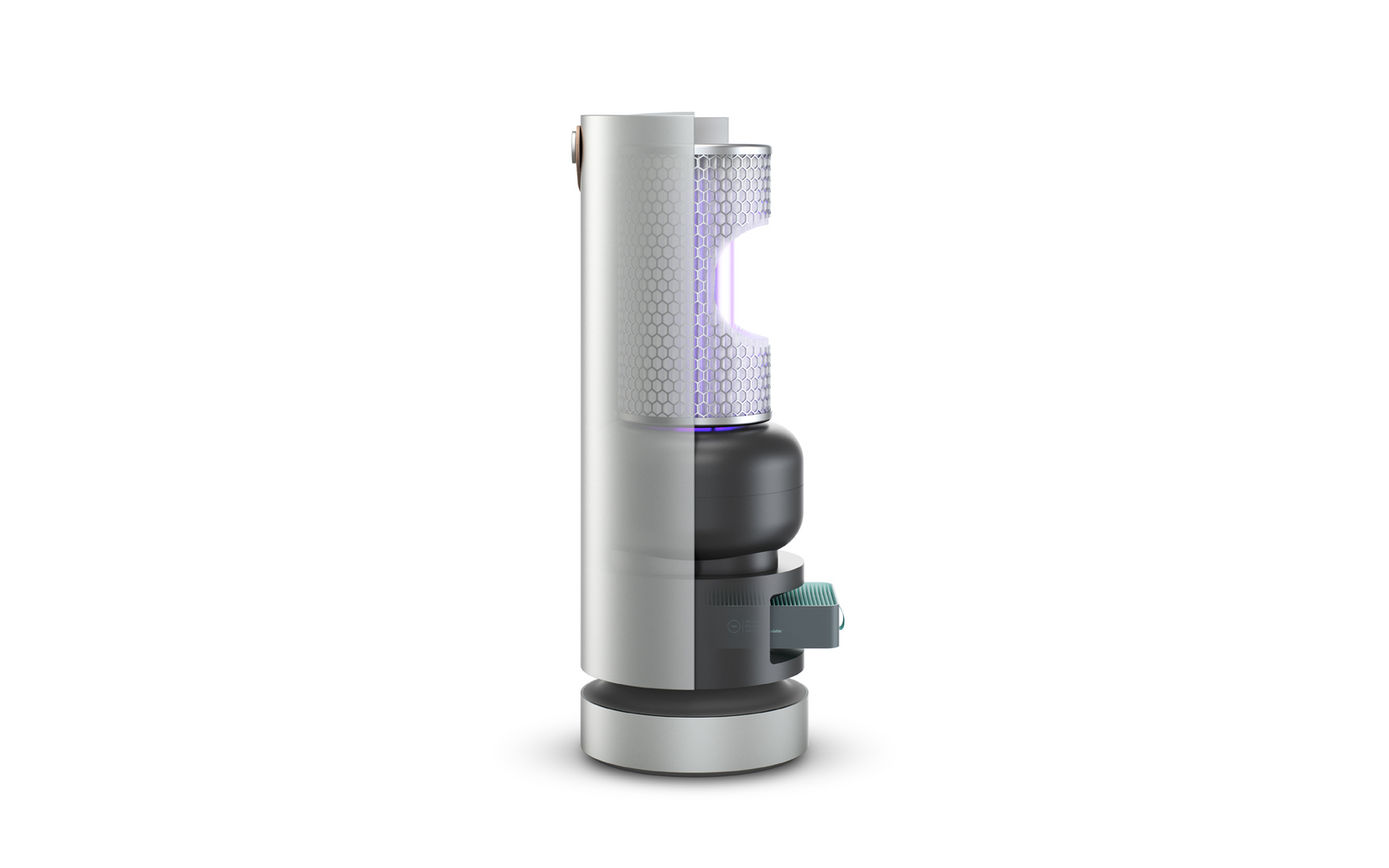The technology inside the PECO air purifier was developed over 20 years by solar energy scientist Dr. Yogi Goswami to tackle the growing problem of indoor air pollution inside the home, which the EPA has found to be 2 to 5 times worse than levels outdoors.
It has been known for hundreds of years that invisible toxins are transmissible through the air, but only since the 20th century have solutions been attempted to clean the air. Many current air filtration methods use some form of the technologies that were first developed, which push air through a fiber filter. However, care must be taken in the design of such devices because some pollutants can be allowed to pass through the filter.
The technology behind the PECO air purifier
A PECO air purifier is a novel method of cleaning the air that builds on the existing solutions by combining traditional filtration principles with powerful chemistry. The technology can currently be found in the Molekule air purifier.

The PECO air purifier contains two filters in each device: a Pre-Filter and a PECO-filter.
Photo Electrochemical Oxidation (PECO) utilizes the traditional principles of mechanical filtration not to merely concentrate pollutants on filters, but to destroy them using chemistry. The PECO air purifier uses a PECO-filter in addition to a more standard Pre-Filter. The Pre-Filter serves to collect some larger pollution particles in the environment and to protect the PECO-Filter from substances that would otherwise block the light that activates the nanocatalyst.
Editor’s Note: The Molekule Air Mini does not have a Pre-Filter, but an integrated PECO-Filter with an outer layer that captures large particles.
The fibers of a PECO-filter are coated with a proprietary nanocatalyst that serves to destroy pollutants through the process of oxidation. The nanocatalyst is activated via LEDs and generates hydroxyl radicals, which are among the most powerful oxidizers known. The radicals attack pollutants that are trapped in the fibers, converting organic substances such as VOCs, bacteria, viruses, mold, and the organic toxins associated with these organisms into trace gases such as carbon dioxide and water. The chemical process is complex, but is well-described in the research that led to its invention.

The PECO-filter, where Photo Electrochemical Oxidation takes place
How does the PECO air purifier work on different pollutants?
The hydroxyl radicals produced by PECO technology are one of the most powerful oxidizers known and are also very short-lived in the atmosphere. These free radicals are the primary actors when pollutants are destroyed by natural solar-powered atmospheric chemistry high above the surface of the earth. Many of the airborne substances that impact our health become inert when oxidized, so PECO is uniquely suited to help clean the air.
VOCs
One of the primary targets of the PECO-Filter is volatile organic compounds, or VOCs. These substances are very common in the industrialized world as they are used in the manufacturing of plastics and other processed and formed products. The VOCs used in manufacturing are often toxic and can cause health problems with repeated exposure such as allergy, asthma, and even cancer.
In addition to being toxic, VOCs are also highly susceptible to oxidation. In fact, the eventual fate of all VOCs is to be oxidized and become carbon dioxide and water. The process employed in a PECO-Filter is very effective at reducing VOC concentrations in the air, as shown by the third-party laboratory Intertek.
Allergens
Allergens are substances that elicit an allergic reaction. There are a number of substances that serve as allergens, from individual scent molecules in perfume to the proteins on the surface of pollen grains. Most allergens are organic substances, meaning they are based on carbon and often produced by biological processes.
Like VOCs, allergens represent a unique challenge for purifiers because they are often small enough to be buffeted through the fibers of a traditional filter by air currents. Allergens that encounter the fibers of the PECO-filter, however, are attacked by hydroxyl radicals which tear them apart and convert them into trace gases.
Bioaerosols: Mold, bacteria and viruses
The spectrum of airborne pollutants also involves living organisms. Mold, bacteria, and viruses don’t just create toxins and elicit allergies, they can start to reproduce in your body and cause serious infections. PECO technology deals with these pollutants very well. All organisms require organic molecules to live, so when a potentially living thing lands on the nanocatalyst-coated fibers, those vital substances are so disrupted there’s practically no chance it can grow or infect anyone.
Not only does PECO sterilize the organism, it breaks down all of its components. This is important because their tiny microbial bodies contain all manner of toxins, such as endotoxins from bacteria or mycotoxins from mold.
Smoke, dust and other particulate matter
In addition to being a catalyst, PECO is also a filter. Any particles of dust, smoke, or other toxic substances are captured and held tight by the fibers. If there is any biologically active organic substances riding along on these particles, they are safely oxidized into trace components.
PECO’s journey
The idea for a new air purification technology began with Dr. Yogi Goswami, who started to research new approaches when airborne triggers aggravated his son’s asthma. Looking into the science of air filtration he realized that the most common solutions were not only ineffective but also decades old. Used to innovative solutions incorporating the latest research, he used his knowledge of materials science from solar power to create a device that eliminated airborne asthma and allergy triggers.
To learn about validation testing that has been done on PECO, check out our blog post on PECO and VOCs or read about the third party testing we did with PECO. To learn a little more about the difference between Molekule’s solution and traditional air filtration, read how PECO is different than HEPA and how it is different compared to UV sterilization systems. Finally, for an overview of the Molekule unit that features the PECO filter, our technology page has more information.







